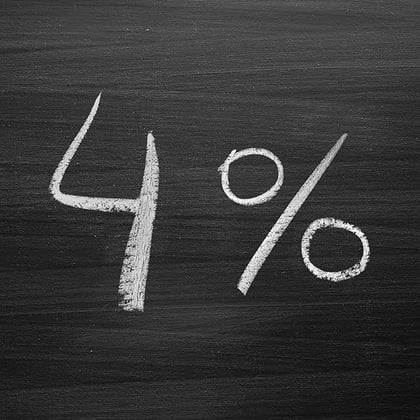What You Need to Know
- The much-studied 4% rule continues to be tweaked to find the best balance for withdrawal rates.
- A newer study shows that 3.5% might be the best number based on a 50/50 portfolio mix.
- Equities bring in the highest returns, but retirees need to know their risk tolerance.
How much should your clients spend in retirement? Too much and they’ll go broke, too little and they could be unnecessarily sacrificing quality of life. Is there a “just-right” rate of withdrawal from retirement accounts?
Morningstar portfolio strategist Amy C. Arnott examined this question in a recent column. As it has been explored many times by industry advisors and analysts, Arnott looked through a different lens. That is, going forward, where does the 4% rule for withdrawal rate stand today?
Here are past studies on the 4% rule she mentioned — including the landmark study from Bill Bengen — to Michel Kitces’ discussion with Bengen to papers from the Morningstar team:
- Bengen’s original paper, published in 1994, studied 30-year periods with starting dates from 1926 to 1976. He found that a 50/50 portfolio and a 4% withdrawal rate wouldn’t deplete a retiree’s resources over 30 years.
- Kitces studied several 30-year periods going back to 1871, and concluded that while a 4% withdrawal rate worked with a 60/40 portfolio in every scenario, the best actual median withdrawal rate was about 6.5%.
- Cornerstone Wealth Advisors’ Johnathan Guyton in a 2004 paper found that a 65% equity weighted portfolio’s safe withdraw rates could run as high as 6.2%.
- David Blanchett, Michael Finke and Wade Pfau in a paper published in 2013 argued that in the era of lower bond yields, 4% wasn’t sustainable.
- In 2020, Pfau published an article that found, given lower bond yields and an average risk premium of six percentage points per year over bonds and 2% for inflation, a sustainable withdrawal rate was actually 2.4% for a 50/50 portfolio. Arnott writes that Bengen thought lower inflation should actually allow for “more generous withdrawal rates,” even as high as 5.5%.
Arnott ran her own numbers and found that “low inflation is one of the reasons a 4% withdrawal rate would still have been sustainable over the worst 30-year return stretch we’ve experienced to date: 1929 through 1958.” However, if inflation was as high as 2.9%, “a portfolio would have been depleted after about 25 years,” she said.
What’s Just Right?
As Arnott writes, “it should be clear by this point that the only answer to the ‘right’ number for sustainable withdrawal rates is both vague and unhelpful: It depends.”
She says her colleague Maciej Kowara used a 30-year horizon to test various withdrawal rates and then ran Monte Carlo analysis to “randomly generate 10,000 potential return paths for each spending rate” that would generate an array of probabilities and outcomes. He assumed average real return assumptions of about 7% for stocks and 0.4% for bonds.









 March 09, 2021 at 11:06 AM
March 09, 2021 at 11:06 AM










